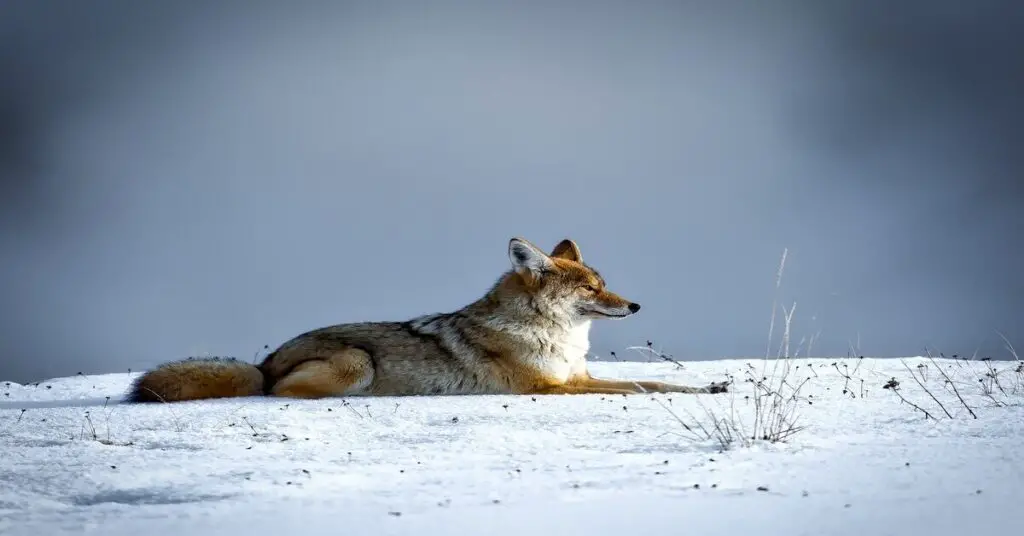Do you know what a coyote sounds like?
The answer is most likely yes. If you live in an area where coyotes are native, you have probably heard them before. However, have you ever noticed the special characteristics that their sound has? The unique coyote howl is often described as “tipping” or “barking,” but it’s actually a lot more complex than that.
In fact, not only can coyotes mimic other sounds from birds and small mammals to humans, but they can also mimic their own coyote yips! This process is called “vocal learning,” which means the ability of an animal to modify its vocalizations.
Humans are the only other animals that have this skill, which is why it’s so fascinating! Using their voice to learn sounds may also be attributed to how intelligent coyotes are. They are highly communicative with one another, using different barks and yelps to communicate everything from territorial warnings to food sources.
Different types of coyote sounds
Howling
This is the most recognized call made by a coyote.
They will howl to find mates, mark territory, or announce their presence. It can last from 3-10 seconds. While the coyote is howling, he will usually face the moon or some point above his head. These howls can be heard from more than 5 miles away!
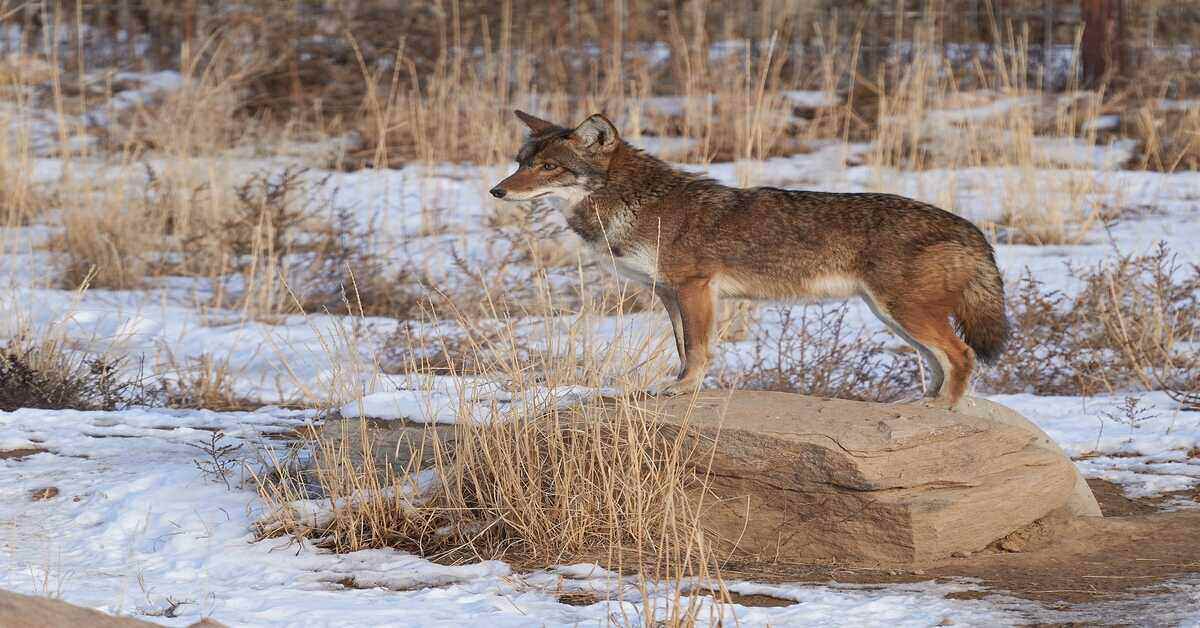
Related: Tips for surviving a wolf attack
Yelping
High pitch yelps are naturally associated with pain or distress, like when a coyote gets caught in a trap.
Barking
When barking, the coyote is in a playful mood and is letting others in his group know where he is. It’s also used to threaten other animals in their territory, like wolves or mountain lions. Typically, they will stand straight up on their hind legs and bark at the intruder.
Yipping
A combination of barks, howls, and yelps that can vary in pitch. They are usually used for communication between family members or to scare off intruders. These are very distinctive sounds that allow people to identify the coyotes by their calls.
Whimpering
The coyote’s whimper is high-pitched and can sound like a yelp or whine. It often happens when the coyote is in pain or feels threatened. Coyotes will also whimper to calm themselves, so it is usually best to leave them alone if you hear this sound coming from one.
Screaming
This is an agonizing, high-pitched sound the coyote makes when seriously injured or in intense pain. We most often associate animals with screaming when they are in danger or need help, so if you hear this sound coming from one, it is best to call for help.

Giggling
These are quiet, short calls usually made by females during mating season (usually January-March).
How coyotes are able to mimic other sounds
Coyotes can mimic other sounds from birds and small mammals to humans, as well as their own “coyote yips.” One reason for this may be their unique sense of hearing and how it’s used to connect with others. Coyotes have large ears that swivel in different directions to pick up on every sound around them. They also use these ears as radar when hunting prey in the dark.
Their ears aren’t the only thing that helps them pick up sounds; they can also hear higher pitches than other animals, which means they can hear sounds coming from a greater distance! This makes it extremely easy for them to communicate with others and share information.
Being able to mimic different sounds is one of the reasons why the coyote is such a good hunter. They will mimic birds and small animals to draw them out of their hiding spots, which gives them an easy meal!
Coyote behavior
Humans need to understand coyote behaviors in order to coexist peacefully with them.
Coyotes are wild animals that have adapted well to living in urban environments. As a result, there are many conflicting opinions about how best to live with coyotes, with some wanting them eradicated. In contrast, others don’t want any harm done to the animals.
Because coyote behavior is not yet entirely understood by humans, a great deal of misinformation is spread about them. Understanding how coyotes behave is the first step in learning to live with these animals.
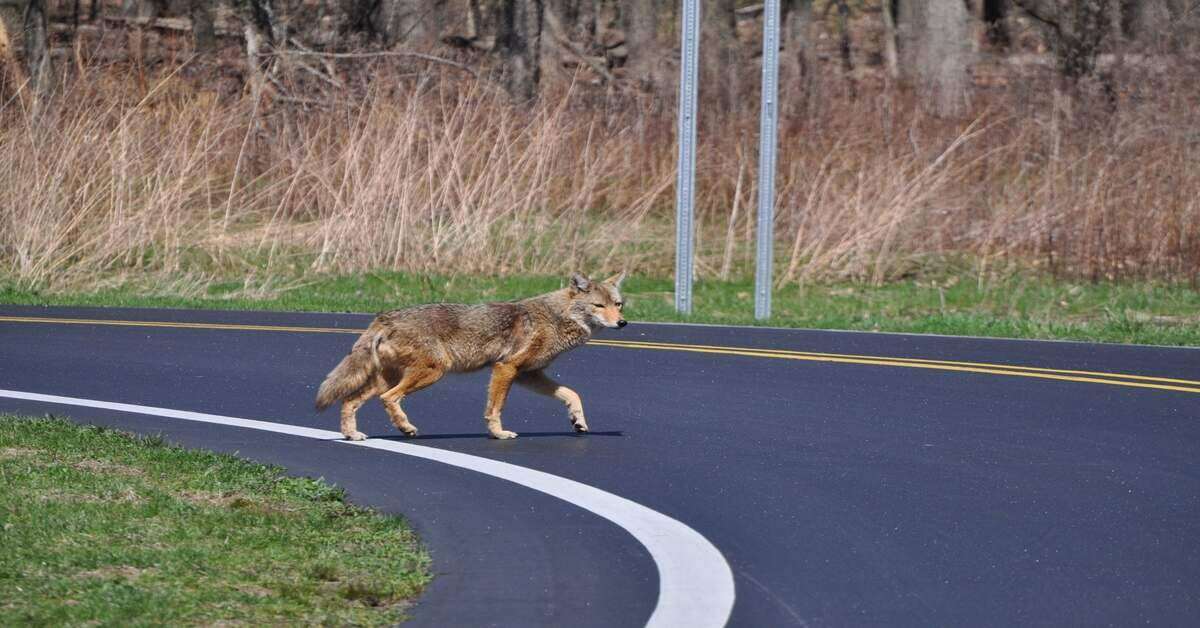
One common source of conflict between humans and coyotes is that they will sometimes come into suburban yards to look for food.
Attacks on pets
Coyotes are very opportunistic feeders, meaning that they will take advantage of any food source that is available to them. While some humans are content to let their dogs run free, others prefer to keep them within the yard’s boundaries. Because of this, coyotes have learned that it can be easy pickings for them if they come into suburban yards with unattended pets.
If you have ever heard a coyote, you will know that they sound very much like small children when they are in distress. Some humans have mistakenly concluded that it is their pet being attacked by the coyote when in reality, it is just another wild animal trying for an easy meal.
Since coyotes sometimes roam suburban neighborhoods for food, avoid feeding them. For instance, if you have a large bird feeder, it will attract animals such as squirrels, which are coyote prey. In addition, make sure you put a lid on your trash bins to discourage hungry coyotes from coming to investigate.
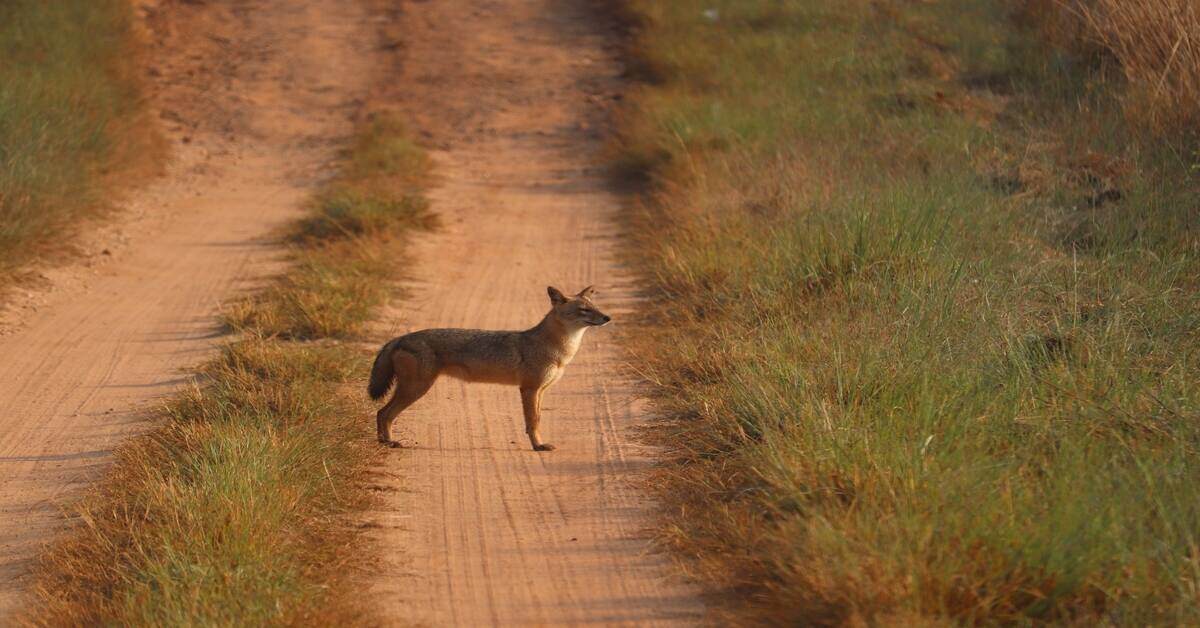
When hiking in the great outdoors with your dog, ensure you keep them on a leash. If you spot one coyote, do not let your dog chase it, however big it is. There is usually a pack of coyotes hiding nearby, and they will quickly kill your pet. Here are more tips to keep your dog safe from coyotes.
Use fencing to keep coyotes at bay
Fencing your yard or property is a surefire way to prevent coyotes from gaining entry. Make sure the fence is at least six feet because coyotes can easily jump over if it’s short. Do not forget to place a roll bar at the top as these animals may try to climb the fence to get to the other side.
Some people have successfully used repellents to keep coyotes at bay. Coyotes have an acute sense of smell which helps them identify and track their prey. So when they catch a smell they don’t like, they will go the other way. An example is wolf urine, which tells them there’s an enemy (a wolf) nearby! A coyote will typically avoid a confrontation with such a formidable opponent! Bear spray is also known to keep coyotes away.
Understanding coyote behavior is crucial in reducing confrontations with humans. Coyotes are not usually aggressive towards humans unless they have been habituated to being around people or feel that their pups are threatened.
The natural history of coyotes
Coyotes are found throughout North America, occupying all but the most northerly reaches of Canada and Alaska. Coyotes are omnivores, which means that they eat meat as well as plants. They were once hunted to near extinction by humans mainly because it was believed that they preyed on livestock. However, recent studies have shown that their diet is mainly made up of small rodents and insects.
Coyote Attacks on humans
Coyotes don’t typically attack humans. When coyotes attack humans, it is usually because the person was acting erratically or was carrying food around, which got the coyote’s attention. If you see a coyote in your yard, make loud noises and act aggressively towards them to make sure that they know you are not prey. In the rare chance that a coyote attacks a person, they will probably stop when it is clear that you are not something that should be taken advantage of or eaten.
Related: How to avoid a wild pig attack in the wilderness
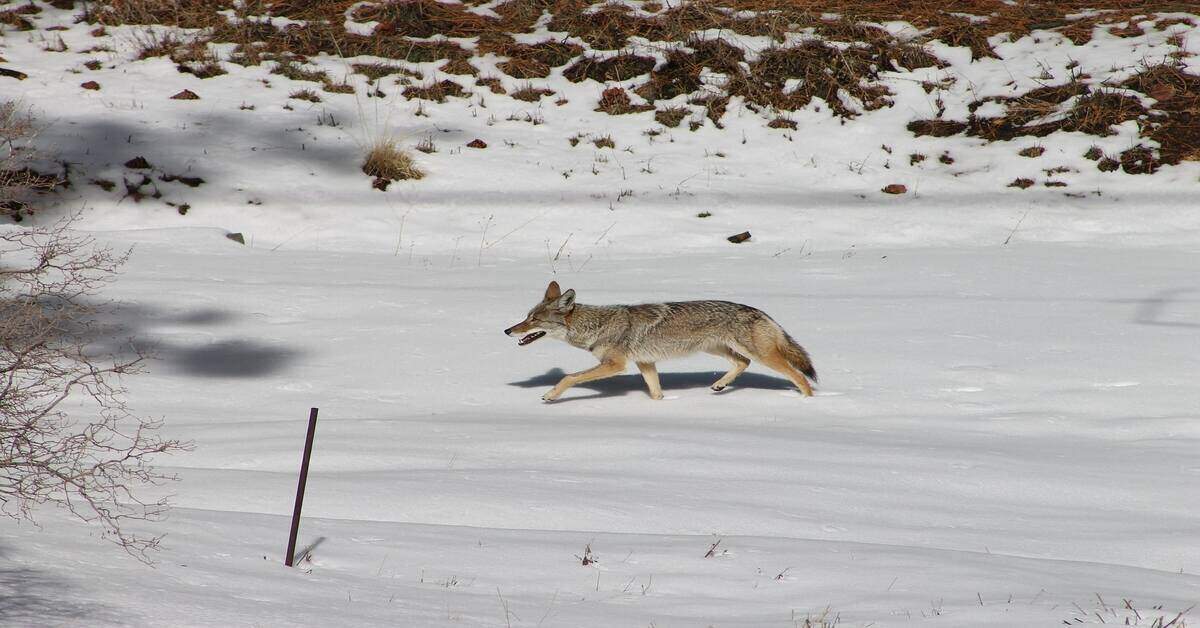
Ways you can scare off a coyote
At times a coyote starts hanging around your yard or home while you’re not there or begins visiting frequently. It’s crucial that you discourage it from coming again, as this poses a danger to your pets and kids. So do the following the next time you spot the coyote in your yard or near your home:
- Make loud noises near where you last saw the coyote, such as banging your pots and pans together. Items such as a can with rocks inside and an air horn produce sounds that will scare off any coyote.
- Spray water from a hose or sprinkler at the coyote if you see it again to discourage it from coming back.
- Keep your pet on a leash when outside, particularly at night, and keep them inside if possible (not always an option).
- If the coyote comes near you while you’re outside, yell loudly at it and throw rocks in its direction (don’t hit or aim for its head, which can injure it or make it more aggressive). Remember to wave your arms to make yourself look bigger when the coyote can see you.
- Keep your yard free of outdoor food sources like pet food, trash, etc., to discourage wild animals from hanging around
- If none of these work, contact animal control or the non-emergency line of your local police department to see if they can send someone to remove it. Note that trapping or killing of coyotes is illegal in many areas, so it’s vital that you get in touch with the relevant authorities when a coyote becomes a nuisance.
I hope this post provided enough information on what a coyote sounds like. Have you ever identified a coyote from its call? How was the experience? Please let us know in the comments section!

